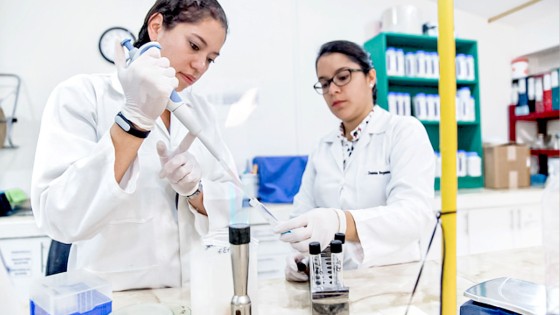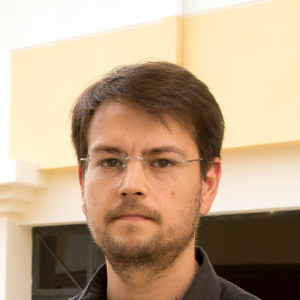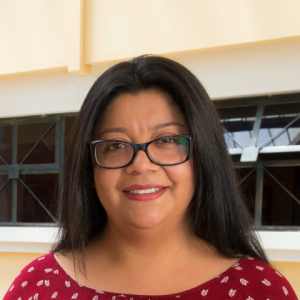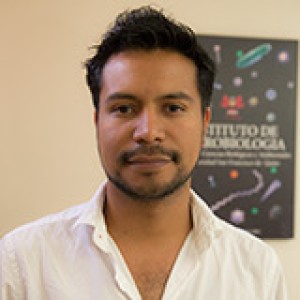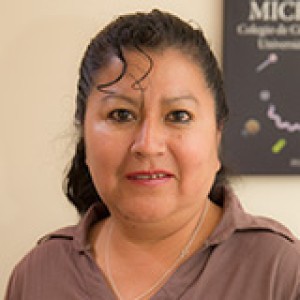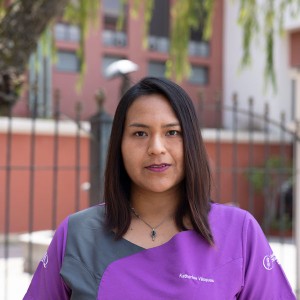Instituto de Microbiología

The Institute of Microbiology promotes interdisciplinary collaboration for the development of research in the area of Microbiology.
Microbiology is a field of science with innumerable applications such as: health, environment, food, agriculture, biotechnology, etc. For this reason, the Institute of Microbiology promotes collaboration between professors who belong to different schools of USFQ and who have interests related to this field. The Institute provides opportunities for professors to direct graduate theses (at the master's and doctoral level) within the various applications of Microbiology.
The Institute of Microbiology has research interests in different fields: Medicine, Veterinary, Agriculture, Food Industry, Pharmaceutical Industry, Bioremediation, Biofuels, Industry, Forestry, and Fishing, among others.
To train professionals to face the challenges of modern Microbiology and promote scientific research in Ecuador.
To create an internationally recognized research center that promotes research in the field of Microbiology with a multidisciplinary vision.
Services
Food Microbiology Laboratory
The Food Microbiology Laboratory has specialized staff and updated methodologies to provide the best service in Food Microbiology in quality and safety indicators. We rely on globally standardized standards. Our laboratory is in the process of accreditation to ISO 17025 and offers the following services:
Food microbiology:
- Mesophilic aerobic count. AOAC method 990.12.
- Coliform count and Escherichia coli. AOAC Method 991.14.
- Coliform and Escherichia coli count by most probable number. BAM method 4.
- Mold and yeast count. BAM method 18.
- Staphylococcus aureus count AOAC 2001.05.
- Enterobacteria count AOAC 2003.01.
- Molecular determination of Salmonella enterica. AOAC Method 2013.09.
- Molecular determination of Listeria monocytogenes. AOAC 081203.
Microbiology of water samples:
- Drinking water analysis. Standard Methods 9222 B.
- Analysis of purified bottled water. Standard Methods 9222 D, 9213 E and AOAC 990.12
Other Analysis:
- Sampling service.
- Molecular analysis of food samples.
- Molecular identification of isolated colonies of various species.
- Phenol index for disinfectants.
- Microbiological analysis of surfaces in contact with food.
- Various analysis according to customer needs.
- Investigation of the origin of food spoilage.
Address and contacts:
Diego de Robles s / n and Pampite. Inside the San Francisco de Quito University.
Telephone: 2971700 ext. 1278 or 1317
Lorena Mejía: mmejia@usfq.edu.ec
Joselyn Rivera: jrivera@usfq.edu.ec
Laboratory: labmicroalimentos@usfq.edu.ec
Virology Laboratory
It is a laboratory that provides the veterinary molecular diagnostic service, with personnel trained in the area of virology. We adjust to your diagnostic need with the standardization of the test for the requested virus, offering the following services.
Molecular diagnosis of Mycoplasma hyopneumoniae
Virus
- Molecular diagnosis of Influenza (screening).
- Molecular diagnosis of H1N1 influenza.
- Molecular diagnosis of H3N2 influenza.
- Molecular diagnostic standardization for other viruses.
Address and contacts:
Diego de Robles s / n and Pampite. Inside USFQ.
Telephone: 2971700 ext. 1315
Sully Márquez: smarqueza@usfq.edu.ec
Clinical Microbiology Laboratory
The clinical diagnosis area of the Institute of Microbiology, of the San Francisco University of Quito, offers the service of human clinical microbiological diagnosis through traditional methodology with qualitative and semi-quantitative tests, these processes seek to be a diagnostic tool for doctors through the identification of bacteria responsible for infections, as well as their antimicrobial susceptibility, the laboratory also has a molecular biology area for special cases where it is not possible to identify bacteria by traditional tests and require further investigation. The laboratory offers the following services:
- Urine culture and Antibiogram.
- Culture and Antibiogram Vaginal Secretion.
- Culture and Antibiogram Urethral Secretion.
- Culture and Antibiogram Pharyngeal Secretion.
- Culture and Antibiogram Secretion Or Otic Exudate.
- Culture and Antibiogram Ocular Secretion.
- Culture and Antibiogram of Seminal Liquid.
- Culture and Antibiogram of Synovial Fluid.
- Cerebrospinal Fluid Culture and Antibiogram.
- Culture and Antibiogram of Sputum.
- Research of Streptococcus Group B. Dermatophytos Fungi Research.
- Culture and Antibiogram of Wounds.
- Culture and Antibiogram of Abscesses.
- Culture and Antibiogram other Liquids.
- Culture and Antibiogram other Secretions.
- Coproculture and Antibiogram.
- Blood culture and antibiogram.
- Molecular Analysis.
Additionally, the USFQ Institute of Microbiology provides molecular diagnostic services for 33 genotypes of human papilloma virus (HPV), between high and low risk, and the simultaneous molecular detection of a group of sexually transmitted diseases (STDs) that They include the following parasites, bacteria, and viruses:
- Chlamydia trachomatis.
- Neisseria gonorrhoeae.
- Trichomona vaginalis.
- Mycoplasma genitalium.
- Mycoplasma hominis.
- Ureaplasma urealyticum/parvum.
- Herpes simplex virus 1.
- Herpes simplex virus 2.
- HPV6.
- HPV11.
Diagnosis of HPV and other STDs is made using Diagcor® GenoFlow technology that combines polymerase chain reaction with hybridization technology.
Address and contacts:
Diego de Robles s / n and Pampite. Inside the San Francisco de Quito University.
Clinical Microbiology
Cristina Chávez: achavez@usfq.edu.ec
Telephone: 2971700 ext. 1319
Molecular Diagnosis
Juan Mosquera: jdmosquera@usfq.edu.ec
Telephone: 2971700 ext. 2051
Researchers
USFQ Research Associates
| Stella de la Torre | Dean, College of Biological and Environmental Sciences, COCIBA. |
| Lourdes Torres |
Vice Dean, Biotechnology Coordinator, Plant Biotechnology Laboratory. COCIBA |
| Andrés Caicedo |
BioMed Professor-Researcher / Director of the Research Laboratory - School of Medicine, College of Health Sciences, COCSA |
| Andrea Encalada |
Director of the Laboratory of Aquatic Ecology, COCIBA |
| Valeria Ochoa |
Director of Environmental Engineering, College of Science and Engineering, Polytechnic. |
| Enrique Terán |
Director, Hospital Simulation Medical, College of Health Sciences, COCSA. |
| Carlos Valle |
Associate Director for Research in Ecology and Evolutionary Biology of the Galapagos Science Center, COCIBA. |
| Luis Alberto Pedroza |
Professor of Immunology, College of Health Sciences, COCSA. |
| Ana Cristina Aguilar |
Professor of Embryology and Infectious Diseases, College of Health Sciences, COCSA. |
| Antonio León |
Agricultural and Food Biotechnology, College of Science and Engineering, Polytechnic. |
| Renato León |
Professor of Medical Entomology / Director of the Laboratory of Medical Entomology and Tropical Medicine, COCIBA. |
| Pablo Endara |
Professor of Epidemiology, College of Health Sciences, COCSA. |
| Pieter Van’t Hof |
Full-time Professor and Researcher, COCIBA |
External associate researchers
| Gabriela Vasco |
Universidad Central del Ecuador |
| Jaysoom Abarca |
Hospital Eugenio Espejo |
| Gustavo Calle Hinojosa |
Hospital José Carrasco Arteaga |
| Thalía Ortega | Solca Quito |
| Denis Augot | ANSES, France |
| Emmanuel Breard | ANSES, Maison Alfort, France |
| Montserrat Gállego | University of Barcelona, Spain |
| Gustavo Spinelli | Universidad Nacional de la Plata, Argentina |
| Karen Levy | Rolling School of Public Health, Emory University |
| Jay Graham | Public Health Institute |
| Joe Eisenberg | School of Public Health, University of Michigan |
| Lixin Zhang | CAS Key Laboratory of Pathogenic Microbiology & Immunology, Institute of Microbiology, Chinese Academy of Sciences (IMCAS) |
| Nuno Filipe Azevedo | Department of Chemical Engineering, University of Porto, Portugal |
| Laura Isabel Macieira Cerqueira | Department of Chemical Engineering, University of Porto, Portugal |
| Carina Almeida | Department of Biological Engineering, Universidad del Minho, Portugal |
| Empresa spin-off BIOMODE | Determination S.A. |
| Fernando González | Universidad of Valencia, FISABIO |
| Christopher Logue | PHE (PUBLIC NATIONAL HEALTH) |
| Verónica Paz | Hospital Delfina Torres de Concha |
| Josefina Coloma | University of Berkley |
| Jérôme Depaquit | Université de Reims, |
| Carlos Peña Garay | Universidad de Valencia, Isys2bio |
| Tatiana Mosquera | Universidad Politécnica Salesiana |
| Viviana Albán | INSPI Quito |
| Silvia Espín | Quito Metropolitan District |
| Talima Pearson | Northern Arizona University |
| María Eugenia Silva | Universidad Central del Ecuador |
| Linda Guamán | Universidad UTE |
| Patricia Zambrano | ESPAM |
| César Bedoya | INSPI |
Research Fields
| Area | Coordinator |
|---|---|
| Clinical Microbiology | Cristina Chávez |
| Food and Water Microbiology | Lorena Mejía |
| Parasitology | Sonia Zapata |
| Bacteriology | Gabriel Trueba y Antonio Machado |
| Genómica Bacteriana | Verónica Barragán |
| Entomología Médica | Renato León |
| Plant and Environmental Microbiology | Valeria Ochoa y María de Lourdes Torres |
| Virology | Christopher Logue |
Publications
→ 2018
- High Prevalence of Extended-Spectrum Beta-Lactamase CTX-M–Producing Escherichia coli in Small-Scale Poultry Farming in Rural Ecuador
Hayden D. Hedman, Joseph N. S. Eisenberg, Karla A. Vasco, Christopher N. Blair, Gabriel Trueba, Veronica J. Berrocal and Lixin Zhang
Publisher: The American Society of Tropical Medicine and Hygiene
Source: The American Journal of Tropical Medicine and Hygiene
Available online: 19 November 2018
Document Type: Research Article
DOI: https://doi.org/10.4269/ajtmh.18-0173 - Locals Get Travelers’ Diarrhea Too: Risk factors for diarrheal illness and pathogenic E. coli infection across an urban‐rural gradient in Ecuador
Shanon M. Smith, Lorena Montero, Maritza Paez, Estefania Ortega, Eric Hall, Kate Bohnert, Xavier Sanchez, Edison Puebla, Pablo Endara, William Cevallos, Gabriel Trueba, Karen Levy
First published: 16 November 2018
https://doi.org/10.1111/tmi.13183
This article has been accepted for publication and undergone full peer review but has not been through the copyediting, typesetting, pagination and proofreading process, which may lead to differences between this version and the Version of Record. Please cite this article as doi: 10.1111/tmi.13183 - Antibiotic Resistome Associated with Smallscale Poultry Production in Rural Ecuador.
Xueping Guo, Robert D. Stedtfeld, Hayden Hedman, Joseph N.S.Eisenberg,Gabriel Trueba, Daqiang Yin, James M. Tiedje, and Lixin Zhang.
Environ. Sci. Technol., Just Accepted Manuscript. DOI: 10.1021/acs.est.8b01667. Publication Date (Web): 26 Jun 2018.
Downloaded from http://pubs.acs.org on June 27, 2018 - The geospatial relationship of pterygium and senile cataract to ambient solar ultraviolet in tropical Ecuador. 2018
Daniel R. Garzon-Chavez, Emmanuelle Quentin, Simone Lee Harrison, Alfio Parisi, Harry J. Butler and Nathan Downs
http://pubs.rsc.org/en/content/articlelanding/2018/pp/c8pp00023a#!divAbstract - Potential Zoonotic Transmission of Giardia duodenalis in Semi-rural Communities Near Quito, Ecuador. 2018
Marysol Sarzosa1, Jay P. Graham2, Liseth Salinas1, Gabriel Trueba1
http://www.jarvm.com/articles/Vol16Iss1/Vol16%20Iss1%20Trueba.pdf - Bacterial identification of the vaginal microbiota in Ecuadorian pregnant teenagers: an exploratory analysis. 2018
Ana María Salinas1, Verónica Gabriela Osorio1, Pablo Francisco Endara1,2, Eduardo Ramiro Salazar3, Gabriela Piedad Vasco1,3, Sandra Guadalupe Vivero3, Antonio Machado
https://peerj.com/articles/4317/ - Isolation of Oropouche Virus from Febrile Patient, Ecuador. 2018
Emma L. Wise, Steven T. Pullan, Sully Márquez, Verónica Paz, Juan D. Mosquera, Sonia Zapata, Simon K. Jackson, Gyorgy Fejer, Gabriel Trueba, and Christopher H. Logue
https://wwwnc.cdc.gov/eid/article/24/5/17-1569_article - Changes in dominant Escherichia coli and antimicrobial resistance after 24 hr in fecal matter. 2018
Sofía Barrera, Paul Cardenas, Jay P. Graham, Gabriel Trueba.
https://onlinelibrary.wiley.com/doi/epdf/10.1002/mbo3.643
→ 2017
- Multiplex Peptide Nucleic Acid Fluorescence In Situ Hybridization (PNA-FISH) for Diagnosis of Bacterial Vaginosis. 2017
Machado A1, Cerca N1
https://link.springer.com/protocol/10.1007/978-1-4939-7037-7_13 - Small-Scale Food Animal Production and Antimicrobial Resistance: Mountain, Molehill, or Something in-between? 2017
Jay P. Graham1 Joseph N.S. Eisenberg,2 Gabriel Trueba,3 Lixin Zhang,4,5 and Timothy J. Johnson6
https://ehp.niehs.nih.gov/ehp2116/ - Molecular phylogeny of 42 species of Culicoides (Diptera, Ceratopogonidae) from three continents. 2017
Denis Augot, Bruno Mathieu, Leila Hadj-Henni, Véronique Barriel, Sonia Zapata Mena, Sylvia Smolis, Darine Slama, Fano José Randrianambinintsoa, Gabriel Trueba, Matthieu Kaltenbach, Nil Rahola, and Jérôme Depaquit
https://www.researchgate.net/publication/317835697_Molecular_phylogeny_of_42_species_of_Culicoides_Diptera_Ceratopogonidae_from_three_continents
→ 2016
- First Complete Genome Sequences of Zika Virus Isolated from Febrile Patient Sera in Ecuador. 2016
S. Márquez, a J. Carrera, a S. T. Pullan,b K. Lewandowski,K V. Paz,c N. Loman,d J. Quick,d D. Bonsall,e R. Powell,f J. Thézé,g O. G. Pybus,g P. Klenerman, e J. Eisenberg,h J. Coloma,i M. W. Carroll,b G. Trueba,a C. H. Loguea,b
http://evolve.zoo.ox.ac.uk/Evolve/Oliver_Pybus_files/GenomeSequencesOfZIKVfromEcuador.pdf - Bacteria associated with human saliva are major microbial components of Ecuadorian indigenous beers (chicha). 2016
Ana L. Freire, Sonia Zapata, Juan Mosquera, Maria Lorena Mejia and Gabriel Trueba
https://www.researchgate.net/publication/301688138_Bacteria_associated_with_human_saliva_are_major_microbial_components_of_Ecuadorian_indigenous_beers_chicha - Antibiotic Resistance in Animal and Environmental Samples Associated with Small-Scale Poultry Farming in Northwestern Ecuador. 2016
Nikolay P. Braykov,a Joseph N. S. Eisenberg,b Marissa Grossman,a Lixin Zhang,c,d Karla Vasco,e William Cevallos,e,f Diana Muñoz,e Andrés Acevedo,e Kara A. Moser,b Carl F. Marrs,b Betsy Foxman,b James Trostle,g Gabriel Trueba,e Karen Levy
http://msphere.asm.org/content/msph/1/1/e00021-15.full.pdf - Detection of Zoonotic Enteropathogens in Children and Domestic Animals in a Semirural Community in Ecuador. 2016
Karla Vascoa, Jay P. Grahamb and Gabriel Truebaa
http://aem.asm.org/content/82/14/4218.abstract - Draft genome sequence of the first pathogenic Leptospira isolates from Ecuador. 2016
Veronica Barragan, Jason W. Sahl, Kristin Wiggins, Jorge Chiriboga, Ana Salinas, Nancy E. Cantos, Mariana N. Loor, Bertha I. Intriago, Melba Morales, Gabriel Trueba, Talima Pearson
https://nau.pure.elsevier.com/en/publications/draft-genome-sequence-of-the-first-pathogenic-leptospira-isolates
→ 2015
- Diagnosis of bacterial vaginosis by a new multiplex peptide nucleic acid fluorescence in situ hybridization method. 2015
Machado A1, Castro J1, Cereija T1, Almeida C1, Cerca N1.
https://www.ncbi.nlm.nih.gov/pubmed/25737820 - Effects of Selection Pressure and Genetic Association on the Relationship between Antibiotic Resistance and Virulence in Escherichia coli. 2015
Lixin Zhanga*, Karen Levyb, Gabriel Truebac, William Cevallosd, James Trostlee, Betsy Foxmana, Carl F. Marrsa and Joseph N. S. Eisenberga
http://aac.asm.org/content/59/11/6733.full
→ Previous Years
- Poulsen, K. P. et al. Brucellosis in Dairy Cattle and Goats in Northern Ecuador. American Journal of Tropical Medicine and Hygiene 90, 712–715 (2014).
Guamán, L., Zapata, S., Serrano, M. & Trueba P., G. A.Characterization of lactic acid bacteria isolated from traditional fermented foods of Ecuador. Advances in Science and Engineering 6, (2014).
- Bhavnani, D., Goldstick, J. E., Cevallos, W., Trueba, G. & Eisenberg, J. N. S. Impact of Rainfall on Diarrheal Disease Risk Associated with Unimproved Water and Sanitation. American Journal of Tropical Medicine and Hygiene 90, 705–711 (2014).
- Monar, M., Dávalos, I., Zapata, S., Caviedes, M. & Ramírez-Cárdenas, L.
Chemical and microbiological characterization of artisan water kefir of Ecuadorian origin. Advances in Science and Engineering 6, (2014).
- Gabriel Trueba. Why does Evolution Matter? The Importance of Understanding Evolution. (2014). doi:10.13140/2.1.5040.0323
- Zurita, J. et al. Healthcare-associated respiratory tract infection and colonization in an intensive care unit caused by Burkholderia cepacia isolated in mouthwash. International Journal of Infectious Diseases 29, 96–99 (2014).
- Vasco, G. et al. Identifying Etiological Agents Causing Diarrhea in Low Income Ecuadorian Communities. American Journal of Tropical Medicine and Hygiene 91, 563–569 (2014).
- Levy, K. et al. Household effectiveness vs. laboratory efficacy of point-of-use chlorination. Water Research 54, 69–77 (2014).
- Ayala, S. et al. Detection and Characterization of Infectious Laryngotracheitis Virus from an Outbreak of Respiratory Disease in Ecuador. Intern J Appl Res Vet Med 12, 245–248 (2014).
- Trueba, G. in Confronting Emerging Zoonoses (eds. Yamada, A. et al.) 3–11 (Springer Japan, 2014).
- Cardenas, P. A. et al. Staphylococcus aureus outbreak in the intensive care unit of the largest public hospital in Quito, Ecuador. Int. Microbiol. 16, 81–86 (2013).
- Trueba, G. et al. Escherichia coli O157:H7 in Ecuador: Animal Reservoirs, Yet No Human Disease. Vector-Borne and Zoonotic Diseases 13, 295–298 (2013).
- Beati, L. et al. Amblyomma cajennense (Fabricius, 1787) (Acari: Ixodidae), the Cayenne tick: phylogeography and evidence for allopatric speciation. BMC Evolutionary Biology 13, 267 (2013).
- Rojas, M. I. et al. Deteccion de Coxiella burnetii en leche de bovinos domesticos del Ecuador. Avances en Ciencias e Ingeniería 5, (2013).
- Zabala, C., Barragán, V. & Trueba P., G. A. Erratum: Presence of Brucella sp. in goats of the city of de Quito, Pichincha, Ecuador. Advances in Sciences & Engineering 5, B9–B11 (2013).
- Abril, A., Vasco, L., Espinel, M., Coloma, J. & Trueba, G. Difficulties in the differential diagnosis of dengue and leptospirosis in Guayaquil. 5, B10–B13 (2013).
- Zabala, C., Barragán, V. & Trueba P., G. A. Erratum: Presence of Brucella sp. in goats in Quito, Pichincha, Ecuador. Advances in Science & Engineering 5, B9–B11 (2013).
- Bermeo, E., Barragan, V., Torres, A., Acosta, A. & Trueba, G. First report of Porcine Circovirus 2 (PCV2) circulation in Ecuador. Advances in Science & Engineering 5, B2–B4 (2013).
- Cifuentes, S. G. et al. Transition in the Cause of Fever from Malaria to Dengue, Northwestern Ecuador, 1990–2011. Emerging Infectious Diseases 19, 1642–1645 (2013).
- Evolution from the Galapagos. 2, (Springer New York, 2013).
- Escobar, J. C. et al. Plesiomonas shigelloides Infection, Ecuador, 2004–2008. Emerging Infectious Diseases 18, 322–324 (2012).
- Zapata, S. et al. A study of a population of Nyssomyia trapidoi (Diptera: Psychodidae) caught on the Pacific coast of Ecuador. Parasites & Vectors 5, 144 (2012).
- Bhavnani, D. et al. Bhavnani et al. Respond to ‘Assessing Mechanistic Interaction’. American Journal of Epidemiology 176, 400–401 (2012).
- Bhavnani, D., Goldstick, J. E., Cevallos, W., Trueba, G. & Eisenberg, J. N. S. Synergistic Effects Between Rotavirus and Coinfecting Pathogens on Diarrheal Disease: Evidence from a Community-based Study in Northwestern Ecuador. American Journal of Epidemiology 176, 387–395 (2012).
- Eisenberg, J. N. S. et al. In-roads to the spread of antibiotic resistance: regional patterns of microbial transmission in northern coastal Ecuador. Journal of The Royal Society Interface 9, 1029–1039 (2012).
- Trueba, G. & Dunthorn, M. Many Neglected Tropical Diseases May Have Originated in the Paleolithic or Before: New Insights from Genetics. PLoS Neglected Tropical Diseases 6, e1393 (2012).
- Zapata, S. et al. Morphometric and molecular characterization of the series Guyanensis (Diptera, Psychodidae, Psychodopygus) from the Ecuadorian Amazon Basin with description of a new species. Infection, Genetics and Evolution 12, 966–977 (2012).
- Zabala, C., Barragán, V. & Trueba P., G. A.
Presence of Brucella sp. in goats from the city of Quito, Pichincha province, Ecuador. Advances in Science and Engineering 4, (2012).
- Commins, S. P. et al. The relevance of tick bites to the production of IgE antibodies to the mammalian oligosaccharide galactose-α-1,3-galactose. Journal of Allergy and Clinical Immunology 127, 1286–1293.e6 (2011).
- Barragan, V. A. et al. Interactions of Leptospira with Environmental Bacteria from Surface Water. Current Microbiology 62, 1802–1806 (2011).
- Romoser, W., Leon & Patrican. Meconial peritrophic matrix and meconial degradation in the biting midge, Culicoides variipennis (Coquillett) (Diptera: Ceratopogonidae). Open Access Insect Physiology 1 (2011). doi:10.2147/OAIP.S13726
- Souza da Cunha, S. et al. Asthma cases in childhood attributed to atopy in tropical area in Brazil. Rev. Panam. Salud Publica 28, 405–411 (2010).
- Zapata, S. et al. Characterization of a lipopolysaccharide mutant of Leptospira derived by growth in the presence of an anti-lipopolysaccharide monoclonal antibody. FEMS Microbiology Letters no–no (2010). doi:10.1111/j.1574-6968.2010.02029.
- Figueiredo, C. A. et al. Chronic intestinal helminth infections are associated with immune hyporesponsiveness and induction of a regulatory network. Infect. Immun. 78, 3160–3167 (2010).
- Baquero, M. I., López, N., Mejía, M. E. & Trueba, G. Evaluation of a Polymerase Chain Reaction for the Diagnosis of Leptospirosis in Cattle. TOVSJ 4, 31–35 (2010).
- Valencia C., P. A., Barragán, V. & Trueba P., G. A. Evidence of
horizontal transfer of antibiotic resistance genes from environmental bacteria. Advances in Science and Engineering
2, (2010). - Moncayo, A. L. et al. Risk factors for atopic and non-atopic asthma in a rural area of Ecuador. Thorax 65, 409–416 (2010).
- Jones, L. A. et al. New Records of Phlebotomine Sand Flies (Diptera: Psychodidae) from Ecuador. Proceedings of the Entomological Society of Washington 112, 47–53 (2010).
- Solberg, O. D., Hasing, M. E., Trueba, G. & Eisenberg, J. N. S. Characterization of novel VP7, VP4, and VP6 genotypes of a previously untypeable group A rotavirus. Virology 385, 58–67 (2009).
- Flohr, C. et al. How well do questionnaires perform compared with physical examination in detecting flexural eczema? Findings from the International Study of Asthma and Allergies in Childhood (ISAAC) Phase Two. Br. J. Dermatol. 161, 846–853 (2009).
- Guadalupe, I. et al. Evidence for in utero sensitization to Ascaris lumbricoides in newborns of mothers with ascariasis. J. Infect. Dis. 199, 1846–1850 (2009).
- Cooper, P. J. Interactions between helminth parasites and allergy: Current Opinion in Allergy and Clinical Immunology 9, 29–37 (2009).
- Cooper, P. J. Mucosal immunology of geohelminth infections in humans. Mucosal Immunology 2, 288–299 (2009).
- León, R., Terán, R., Neira, M. & Le Pont, F. Phlébotomes d’Equateur: deux nouvelles espèces du genre Evandromyia (Diptera, Psychodidae). Bulletin de la Société entomologique de France 114, 143–148 (2009).
- León, R., Mollinedo, J. S. & Le Pont, F. Phlébotomes d’Equateur et de Bolivie: descriptions de Psathyromyia castilloi n. sp. et Psychodopygus luisleoni n. sp. (Diptera, Psychodidae). Bulletin de la Société entomologique de France 114, 83–89 (2009).
- León, R., Neira, M. & Le Pont, F. Phlébotomes d’Equateur: Psychodopygus yasuniensis n. sp. (Diptera, Psychodidae, Phlebotominae). Bulletin de la Société entomologique de France 114, 167–170 (2009).
- Hasing, M. E. et al. Rapid changes in rotaviral genotypes in Ecuador. Journal of Medical Virology 81, 2109–2113 (2009).
- Rodrigues, L. C. et al. Early infection with Trichuris trichiura and allergen skin test reactivity in later childhood. Clin. Exp. Allergy 38, 1769–1777 (2008).
- Cooper, P. J. et al. Environmental determinants of total IgE among school children living in the rural Tropics: importance of geohelminth infections and effect of anthelmintic treatment. BMC Immunol. 9, 33 (2008).
- Cooper, P. J. et al. Ascaris lumbricoides-induced interleukin-10 is not associated with atopy in schoolchildren in a rural area of the tropics. J. Infect. Dis. 197, 1333–1340 (2008).
- Santos, C. et al. Estimating adjusted prevalence ratio in clustered cross-sectional epidemiological data. BMC Medical Research Methodology 8, 80 (2008).
- Douce, R. W., Zurita, J., Sanchez, O. & Cardenas Aldaz, P. Investigation of an Outbreak of Central Venous Catheter–Associated Bloodstream Infection Due to Contaminated Water. Infection Control and Hospital Epidemiology 29, 364–366 (2008).
- Barragán, V. A., Aveiga, I. & Trueba, G. Mircobial community composition in petroleum-contaminated and uncontaminated soil from Francisco de Orellana, in the northern Ecuadorian Amazon. Int. Microbiol. 11, 121–126 (2008).
- Cooper, P. J. et al. Repeated treatments with albendazole enhance Th2 responses to Ascaris Lumbricoides, but not to aeroallergens, in children from rural communities in the Tropics. J. Infect. Dis. 198, 1237–1242 (2008).
- Moncayo, A. L. et al. Impact of long-term treatment with ivermectin on the prevalence and intensity of soil-transmitted helminth infections. PLoS Negl Trop Dis 2, e293 (2008).
- Endara, P. et al. Symptomatic and Subclinical Infection with Rotavirus P[8]G9, Rural Ecuador. Emerging Infectious Diseases 13, 574–580 (2007).
- Eisenberg, J. N. S. et al. Environmental change and infectious disease: how new roads affect the transmission of diarrheal pathogens in rural Ecuador. Proc. Natl. Acad. Sci. U.S.A. 103, 19460–19465 (2006).
- Trueba, G. Epidemiological interpretation of fingerprinting profiles from leptospiral isolates. Lett. Appl. Microbiol. 42, 438; author reply 432–433 (2006).
- Zuerner, R. L. & Trueba, G. A. Characterization of IS1501 mutants of Leptospira interrogans serovar pomona. FEMS Microbiol. Lett. 248, 199–205 (2005).
- Moncayo, A. C., Lerdthusnee, K., Leon, R., Robich, R. M. & Romoser, W. S. Meconial peritrophic matrix structure, formation, and meconial degeneration in mosquito pupae/pharate adults: histological and ultrastructural aspects. J. Med. Entomol. 42, 939–944 (2005).
- Trueba, G., Zapata, S., Madrid, K., Cullen, P. & Haake, D. Cell aggregation: a mechanism of pathogenic Leptospira to survive in fresh water. Int. Microbiol. 7, 35–40 (2004).
- Trueba, G., Zapata, S., Madrid, K. & Peñafiel, N. Adaptación de Leptospira interrogans (sensu stricto) al agua dulce. Revista Cubana de Medicina Tropical 54, (2001).
- Platt, K. B. et al. Letters to the Editor. Journal of Medical Entomology 38, 772–773 (2001).
- Platt, K. B. et al. Detection of Dengue Virus Neutralizing Antibodies in Bats from Costa Rica and Ecuador. Journal of Medical Entomology 37, 965–967 (2000).
- Trueba, G. et al. Detection of Fasciola hepatica infection in a community located in the Ecuadorian Andes. Am. J. Trop. Med. Hyg. 62, 518 (2000)
Books:
Partnership
University of Michigan
Country: United States.
Collaboration Type: Financial.
Northern Arizona University
Country: United States.
Collaboration Type: Financial, academic, and Research
The George Washington University
Country: United States.
Collaboration Type: Financial, academic, and Research.
Emory University
Country: United States.
Collaboration Type: Financial, academic, and Research.
Université de Reims Champagne-Ardenne
Country: France
Collaboration Type: Financial, academic, and Research.
Universidad Central del Ecuador
Country: Ecuador.
Collaboration Type: Research.
University of California
Country: United States.
Collaboration Type: Financial, academic, and Research.
Royal Tropical Institute
Country: United States.
Collaboration Type: Research.
National Institute of Public Health Research – INSPI
Country: Ecuador.
Collaboration Type: Research.
Galapagos National Park.
Country: Ecuador.
Collaboration Type: Research.
National University of Misiones.
Country: Argentina.
Collaboration Type: Research.
Universidad of Sao Paulo.
Country: Brazil.
Collaboration Type: Research.
Universidad Politécnica Salesiana.
Country: Ecuador.
Collaboration Type: Research.
University of Southern Florida.
Country: United States.
Collaboration Type: Research.
Workshops
Upcoming events
FEB
17
Workshop 2: Primers design, in silico validation and PCR troubleshooting
This workshop is a brief training in the design of primers, using totally free bioinformatics programs and aims to give an orientation to those people who are venturing for the first time in this vast discipline that is Bioinformatics ...
+ Read more
FEB
24
Workshop 3: Primers design, in silico validation and PCR troubleshooting
This workshop is a brief training in the design of primers, using totally free bioinformatics programs and aims to give an orientation to those people who are venturing for the first time in this vast discipline that is Bioinformatics ...
+ Read more
Previous Events
OCT
1st
FISH Methodology, probe design, and practical study case
Fluorescent In Situ Hybridization (FISH) is a molecular technique that allows locating a certain fragment of the nucleic acid sequence and reveals the presence or absence of specific gene sequences. ...
+ Read more
SEP
17
Primers design, in silico validation and PCR troubleshooting
Polymerase chain reaction (PCR) has many applications in molecular biology, microbiology, medicine, and biotechnology. All these applications depend on the use of primer pairs or primers, which serve as points of ...
+ Read more
Conferences
Upcoming conferences 2019
JUL
15
International Symposium On Phlebotamine Sandflies
ISOPS started as an opportunity to gather scientists from different countries to discuss research findings in Phlebotomine sandflies. The first symposium was held in Rome, in 1991, and for the tenth edition, Ecuador was chosen as a venue... + More
Conferences 2018
JUL
24
II Congress of Microbiology of the USFQ 2018
Congress seeks to present research studies of the different microorganisms, their interactions with the environment, health, and the industrial sector. It also seeks to promote future research collaborations in the applied areas of Microbiology in Ecuador, a country with the greatest biological diversity in the world + Read more
Congresos 2016
NOV
4
I Congress of Microbiology of USFQ 2016
Congress seeks to present research studies of the different microorganisms, their interactions with the environment, health, and the industrial sector. It also seeks to promote future research collaborations in the applied areas of Microbiology in Ecuador...+ Read more
Our Students
Master's students
Santiago Xavier Naranjo Rivadeneira
Title: Identification of EHDV (Epizootic hemorrhagic disease virus) and BTV (Blue Tongue Virus) viruses in Culicoides insignis
Advisor: Sonia Zapata
Diseases caused by orbiviruses such as bluetongue and epizootic hemorrhagic disease cause significant economic losses in livestock and animal production. The evidence suggests that C. insignis could be the vector of the EHDV and BTV orbiviruses in America, therefore, it is necessary to confirm the presence of these viruses in this species and other related ones.
Andrea Macías Matamoros
Title: Study of the antiparasitic bioactivity of natural products obtained from biological sources in Ecuador
Advisor: Patricio Rojas Silva
Ecuador has a high diversity of biological species that need to be studied to understand its bioactivity. By obtaining natural extracts, it is expected to know their effects, and to propose new options for the discovery of new chemotherapeutic agents to allocate them to parasitic diseases.
Nativity scene Rebeca Cortéz Zambrano
Title: Pilot Study of resistance to Antibiotics and Heavy Metals
Advisor: Gabriel Trueba
The study consists of the selection of bacteria resistant to 10 ppm of mercury from the filtration of river water with the presence of illegal mining. Within molecular studies, amplification of the merA and 16S gene is carried out to confirm resistance to mercury and characterize isolates. Finally, the determination of the resistance profile to 12 antibiotics belonging to different classes.
Viviana Atalía Albán Marañón
Title: Identification of zoonotic pathogens in samples of domestic animals in the province of Esmeraldas.
Advisor: Gabriel Trueba
Pilot study part of the ECoMID Project (Enteropathogens, Growth, Microbiome, and Diarrhea) to determine the frequency of Salmonella spp., Campylobacter spp., Cryptosporidium spp., Escherichia coli EPEC, and Escherichia coli STEC as zoonotic pathogens, using the PCR technique in time real quantitative from animal feces samples in a rural-urban gradient in the province of Esmeraldas.
Carolina Guevara
Title: Characterization of the intestinal microbiota in a cohort with growth hormone receptor deficiency (GHRD) in the province of Oro
Advisor: Enrique Terán Study in which the composition of the intestinal microbiota was characterized in a cohort of subjects with (GHRD) and in their relatives paired by sex and age. We will establish the characteristics of the microbiota and relate them to the metabolic phenotype of the subjects in both cohorts.
Stuart Torres
Title: Isolation and identification of lithic phages for Salmonella enteric
Advisor: Sonia Zapata Salmonellosis continues to be one of the biggest public health problems worldwide, including Ecuador. It is expected to obtain a cocktail of specific bacteriophages for various infectious serotypes of Salmonella enteric, by isolation of unique bacteriophages, their identification by molecular and serological techniques, and their subsequent use in conjunction with a cocktail of other equally isolated and identified bacteriophages.
Paula Lasso
Title: Formation and characterization of mixed biofilms of Listeria innocua
Advisor: Antonio Machado Listeria innocua biofilms have been detected on food processing plants surfaces although it usually coexists with other potential or opportunistic pathogens (such as Listeria monocytogenes, Staphyloccocus aureus or even Candida albicans). However, little is still known about L. innocua and its interactions as mixed biofilm formation with other microorganisms. Therefore, our main goal is to study and to understand the dynamic of single and mixed biofilms from L. innocua, using classic and molecular methodologies.
María Belén Atiencia Carrera
Title: Formation and characterization of Candida albicans biofilms
Advisor: Antonio Machado Candida albicans biofilms have been detected on several serious infections (such as oral, genital, and systemic fungal infections). Although Candida albicans usually coexist as commensal or opportunistic microorganisms on the human microbiome in a planktonic form, the presence of biofilms can result in serious problems due to their resistance to antimicrobial agents. So, our main goal is to study and to understand the dynamic of biofilms from several strains of C. albicans, using classic and molecular methodologies.
Valentina Arevalo Granda
Title: Impact of the ABCC11 gene polymorphism on the human skin microbiome
Advisor: Paúl Cárdenas
The effect of the polymorphism of the skin gene in humans called ABCC11 may have an effect on the bacterial skin microbiome, which in turn would influence the affinity of some people to be the target of mosquito bites, for this reason. a pilot study is being carried out on people from the highlands and coast of Ecuador.
Johanna Carolina Molina Tabares
Title: Determination of the possible vector of the Oropuche virus in Ecuador.
Advisor: Sonia Zapata
The Oropouche virus (OROV) belonging to the Bunyaviridae family is the causative agent of a self-limited acute febrile illness, Oropouche fever, transmitted by mosquitoes. The vectors involved in the transmissions in the jungle cycle are the Aedes and Culex mosquitoes, while in the urban cycle it is Culicoides paraenesis; therefore, this study aims to determine the possible biological vector in Ecuador by using qRT-PCR from Culicoides and Culex spp. collected in the province of Esmeraldas in May 2019.
Ph.D. Students
Sara Gabriela Cifuentes Rodríguez
Title: Characterization and Analysis of the Resistoma of the Human Intestine in the Presence of Probiotics
Advisor: Paúl Cárdenas
I am interested in studying the microbiome for its role in human health and particularly because it is an important reservoir of antibiotic resistance genes in the presence or absence of selective antibiotic pressure. My goal is to understand, using metagenomics and bioinformatics tools, what is the scope of this resistance reserve, and if probiotics can positively modify it.
Ana Yulieth Cárdenas Orrego
Title: Wastewater treatment with native microalgal-bacterial consortia from the Ecuadorian Amazon, Andean Region, and Galapagos Islands.
Advisor: Valeria Ochoa
The discharge of untreated wastewater effluents, in Ecuador, has become a serious environmental concern. Microalgae-bacteria consortia hold great potential for wastewater bioremediation as a consequence of their synergistic capacity to degrade organic matter and assimilate nutrients. The objectives of this study are to i) evaluate the elimination of organic matter and nutrients present in the raw wastewater from USFQ by native microalgae-bacteria consortia from the Ecuadorian Amazon, the Andean Region, and the Galapagos Islands and ii) conduct molecular studies of the structure and diversity of the microbial community responsible for the biodegradation process.
Liseth Salinas
Title: Transfer of antibiotic resistance between E. coli strains isolated from domestic and human animals.
Advisor: Gabriel Trueba
The research is focused on the horizontal transfer of antibiotic resistance genes in E. coli. The main objectives are to understand the behavior of plasmids and other mobile genetic elements associated with antimicrobial resistance genes, as well as to determine existing phylogenetic relationships between these bacteria, isolated from domestic and human animals.
Maria Fernanda Zurita
Title: Composition of the lung microbiome of patients with pneumonia who are positive for HIV.
Advisor: Enrique Terán
HIV disrupts the immune system. Pneumonia caused by microorganisms such as M. tuberculosis, H. influenzae, P. jirovecci, H. capsulatum, are frequent and the respiratory microbiome, together with antiretroviral treatments, has an immunomodulatory role. This study focuses on identifying and quantifying the compositional and functional changes of the respiratory microbiome in the carrier phase and in the AIDS phase considering treatment.
María Aracely Zambrano Romero
Title: Comprehensive acid rock drainage treatment system from metal mining activities in Ecuador.
Advisor: Valeria Ochoa-Herrera, Ph.D.
Our research project provides a comprehensive and multidisciplinary perspective on the treatment of acidic rock drains produced by metal mining activities in Ecuador. Through modern molecular techniques, we study the structure, dynamics, and evolution of microbial communities and promote bioremediation from native inocula.
Ligia Elizabeth Luna Vase
Title: In search of two zoonoses associated with poverty in different provinces of Ecuador.
Advisor: Verónica Barragán
Leptospirosis is a zoonotic disease that has a wide distribution worldwide, (1,2). Being the tropical and subtropical regions the ones with the highest incidence of cases and outbreaks (3,4). Studies have shown that one of the major sources of transmission of Leptospira spp. They are environments contaminated with urine from infected mammals, and studies carried out on environmental samples have revealed the great diversity of Leptospira, identifying new potentially infectious species (5). In this context, our research seeks to study peri-domestic spaces and their animals as a risk factor.
Teresa Guerrero
Title: Bacteriophages as an alternative to the use of antibiotics in rearing poultry.
Advisor: Sonia Zapata
Bacterial resistance to antibiotics is an emerging problem worldwide, so the use of bacteriophages is an alternative in animal production. My project focuses on the isolation and characterization of phages that control Salmonella in poultry farms.
Sully Estefanía Márquez Aguilar
Title: Co-circulation of Zika and Dengue under environmental change and urbanization: a longitudinal study in Esmeraldas (2018-2023).
Advisor: Gabriel Trueba
Recently, the spread of mosquito-borne viruses (Dengue, Chikungunya, Zika, Mayaro and Oropuche) and the re-emergence of other viruses thought to be eradicated have been observed. The reasons associated with this viral expansion and reappearance are related to factors such as deforestation, urbanization, climate change and international travel, which is why the project consists of detecting and identifying arboviruses in samples from feverish patients and studying the co-circulation of the same in the province of Esmeraldas for 4 years.
Lorena Montero
Title: Ecuadorian produces: an important source of antibiotic-resistant bacteria
Advisor: Gabriel Trueba
The transmission of antimicrobial-resistant bacteria (genes) is one of the main public health problems worldwide. The lack of wastewater treatment in Ecuador allows human intestinal bacteria to be present in high quantities in rivers and irrigation channels. Some intestinal bacteria such as E. coli can survive in the environment outside the host, are very active in the transmission of antibiotic resistance genes, and can become pathogenic for humans. Our objective is to study the presence of E. coli with extended-spectrum β-lactamase genes in vegetables sold in Quito

